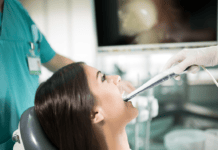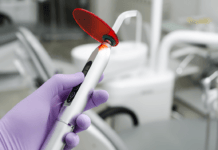How well do you know the patient sitting in your chair? Have you ever taken the time to assess what story their behavior, appearance, and oral health may be telling, or have you gotten caught in the monotony of simply performing the scheduled procedures on your schedule?
How shocked would you be to learn that your patient was a victim of human sex trafficking and you could be the one to help unlock their prison? Dental professionals should take the time to become educated about sex trafficking to help assist in reducing human trafficking in their own communities.
Human trafficking is a form of modern-day slavery in which victims are bought and sold for heinous acts such as forced labor and sexual exploitation. The controlled networks behind this lucrative crime prey on individuals who are vulnerable, such as those in foster care, unstable living situations, runaways, and those from low socio-economic backgrounds.1
It’s estimated that over 40 million victims of human trafficking exist across the globe, and 1,091,000 people are living in conditions of modern slavery in the United States alone2,3 Of those, 75% are females, and 25% are children.2 While most victims are trapped in forced labor, many are victims of sex trafficking. Human trafficking is a multi-billion-dollar industry, and the International Labor Organization estimates that it generates approximately $150 billion dollars annually, second only to the illegal drug trade.2,4
Profile of the Predators
The internet and online porn industry have assisted in growing sex trafficking globally, where victims are prostituted through online social media platforms and subscription-based websites. As society has congregated to social media, so have sex trafficking predators.5
These platforms make the recruitment of victims easier for traffickers as they are able to uncover personal information provided by individuals, such as work, vacation patterns, location, family and friends, and vulnerabilities. This allows traffickers to profile their victims before ever actually meeting them.5
A 2022 Global Report on human trafficking revealed that 58 percent of people who were convicted of human trafficking were male, although the participation of women is higher than compared to other crimes.6
While many of those who commit these crimes have criminal backgrounds or are a part of organized crime groups/gangs, trafficking is not limited to just this audience. In fact, business owners, family, and intimate partners have also been responsible for human trafficking some of their very own.6,7
Types of Sex Trafficking
Sex trafficking may be conducted in several ways:7-9
- Pimp-controlled trafficking
- Gang trafficking
- Familial trafficking
Pimp-controlled trafficking is a solo act by one individual who controls their victim mentally, physically, and emotionally. Initially, victims are smothered with expensive gifts from their Romeo, and a false sense of romance is created. The Romeo will then change their demeanor and pimp out their victim as they single-handedly control the victim’s every move.10
Gang trafficking is facilitated by a group of people who may have more than one victim at a time. These victims are used for sex within the gang but also exploited outside the gang. Because money is the lifeblood of most gangs, sex trafficking provides these gangs with little overhead to a large customer base, increasing large profit margins to help with gang growth.9
Familial trafficking occurs when the victim’s own family member or someone close to the family sells the victim to a third-party trafficker. Children are the primary focus of this variant of trafficking. The average age of children who enter into sexual exploitation is 11 to 14 years old.7
Signs of Trafficking
One would think that it would be too risky for traffickers to take their victims to seek medical or dental treatment. However, in efforts to keep these victims sellable, this becomes a necessity. One study of 106 sex trafficking survivors concluded that 87.8% saw a medical professional during captivity, including a dentist. More than one-half of sex trafficking survivors reported dental problems, with tooth loss being the most common.11
Victims will also exhibit poor dental hygiene due to living conditions. Sex traffickers often use violence to control their victims and will beat, gag, and force-feed those held in captivity, making oral, head, and neck trauma often present.11-13
Victims are also subject to drug abuse as this is a means traffickers use to control their victims through dependency.14 Some of the red flags that may indicate drug abuse include rampant tooth decay, unexplained xerostomia, and accelerated tooth wear.15
Sex trafficking victims are also subject to sexually transmitted diseases (STDs) that can manifest in the oral cavity due to the large amount partners they are forced to be with.12 The classic signs/symptoms associated with STDs that appear in the oral cavity are:
- Herpes: Fluid-filled lesions that break open and leak, which can occur on the gingiva, palate, lips, tongue, tonsillar region, buccal mucosa, and perioral areas16
- HPV: Red or white patches on the tonsils, difficulty/painful swallowing, swollen lymph nodes, jaw pain or swelling, persistent sore throat or hoarseness, and swelling or lump in the mouth17
- Gonorrhea: Sore throat, redness in the throat, and swollen lymph nodes in the neck18
- Chlamydia: Sore throat, intraoral lesions that don’t heal, perioral lesions, and mouth pain19
- Syphilis: Painless papule that develops to a chancre at the point of bacterial entry (primary syphilis); if left untreated, mucous patches may be seen on lips, palate, or, in rare cases, the uvula, along with swollen lymph nodes, and tonsilitis20
Provided with an intimate setting, dental professionals get a front-row seat in the dental office. It is important that dental professionals stay on high alert when treating patients who exhibit signs of human trafficking. When the situation seems off-putting or doesn’t add up, dental professionals should take the time to assess the situation carefully so as not to raise suspicion to the potential trafficker.
Victims will most likely not provide any information due to fear and shame. Some of the warning signs of a sex trafficking victim include:
- Branding or suspicious tattoos signifying ownership. Initials and names accompanied by a symbol or currency symbol are popular in the United States.21
- Shameful or fearful behavior
- Submissive to their partner
- May not have identification, or their partners may be in possession of it
- Not allowed to speak for themselves
- Reluctance or inability to identify their address
- Poor physical health
- Lack of eye contact12
Dental professionals who suspect that a patient may be a sex trafficking victim will most likely not be provided the opportunity to speak to the patient alone, as traffickers will accompany the patient into the treatment room. If it is possible to speak with them alone, the patient should be given the choice to contact the National Human Trafficking Hotline.11
If a clinician is unsure of what to do, the National Human Trafficking Hotline can give guidance as well. It is best to contact 911 if you feel someone is in immediate danger. However, unless calling the authorities is mandatory in your state or immediate danger is not suspected, it’s best for the patient to give consent to make the call.11,12
Dental offices should have a plan for recognizing, screening, and reporting. HEAL Trafficking and Hope for Justice provides a protocol toolkit for health care settings that can help in the development of a dental office’s plan.
In Closing
While dental professionals cannot eliminate this crime alone, we can contribute to victim identification and victim recovery rate. By staying educated on the topic and using our intimate setting to our advantage, we can assist those who need help. This is yet another asset we can contribute to the communities in which we serve.
Before you leave, check out the Today’s RDH self-study CE courses. All courses are peer-reviewed and non-sponsored to focus solely on high-quality education. Click here now.
Listen to the Today’s RDH Dental Hygiene Podcast Below:
References
- Resources – Facts and Figures: USA Modern Slavery and Human Trafficking – Briefing Document, Dec 2023. (2023, December). Hope for Justice. https://hopeforjustice.org/resources-and-statistics/resources-facts-figures.
- Polaris Project. (2016). Human Trafficking Statistics. Human Trafficking Search. https://humantraffickingsearch.org/resource/polaris-project-human-trafficking-statistics
- Hewitt, A. (2023, June 1). More Than 1 Million Human Trafficking Victims in USA – New Study. Hope for Justice. https://hopeforjustice.org/news/more-than-1-million-human-trafficking-victims-in-usa-new-study
- Human Trafficking. (n.d.). Child Welfare League of America. www.cwla.org/our-work/practice-excellence-center/protecting-youth-families/human-trafficking
- Social Media and Child Sex Trafficking. (2023, July 13). Human Trafficking Front. https://humantraffickingfront.org/social-media-and-child-sex-trafficking
- Human Trafficking FAQs. (n.d.). United Nations Office on Drugs and Crime. https://www.unodc.org/unodc/en/human-trafficking/faqs.html
- Hartmann, M., Nikkel, M. (2019, April 5). Familial Trafficking: A Crime Against Children. The Exodus Road. https://theexodusroad.com/familial-sex-trafficking-a-crime-against-children
- Pimp-Controlled Domestic Minor Sex Trafficking. (2017, September). International Organization for Adolescents. https://iofa.org/wp-content/uploads/2017/09/Pimp-Control-Fact-Sheet.pdf
- Frank, M.J., Terwilliger, G.Z. Gang-Controlled Sex Trafficking. Virginia Journal of Criminal Law. 2015; 3: 342-434. https://sharedhope.org/wp-content/uploads/2015/08/Gang-Sex-Trafficking-Article.pdf
- The “Romeo Effect” and How Traffickers Use Love to Lure Victims. (2024). Human Trafficking Search. https://humantraffickingsearch.org/resource/the-romeo-effect-and-how-traffickers-use-love-to-lure-victims/
- Lederer, L.J., Wetzel, C.A. The Health Consequences of Sex Trafficking and Their Implications for Identifying Victims in Healthcare Facilities. Annals of Health Law. 2014; 23: 61-91. www.icmec.org/wp-content/uploads/2015/10/Health-Consequences-of-Sex-Trafficking-and-Implications-for-Identifying-Victims-Lederer.pdf
- Wasdin, A. (2019, May 13). Is Your Patient a Victim of Human Trafficking? Florida Dental Association Services. https://fdaservices.com/blog/117900-is-your-patient-a-victim-of-human-trafficking
- Deshpande, N.A., Nour, N.M. Sex Trafficking of Women and Girls. Reviews in Obstetrics and Gynecology. 2013; 6(1): e22-27. https://www.ncbi.nlm.nih.gov/pmc/articles/PMC3651545/
- Crowley, N. (2022, July 12). Intersectionality Between Substance Use and Human Trafficking. Freedom Network USA. https://freedomnetworkusa.org/2022/07/12/intersectionality-between-substance-use-and-human-trafficking
- Cossa, F., Piastra, A., Sarrion-Pérez, M.G., Bagán, L. Oral Manifestations in Drug Users: A Review. Journal of Clinical and Experimental Dentistry. 2020; 12(2): e193-e200. https://www.ncbi.nlm.nih.gov/pmc/articles/PMC7018485/
- Herpes Simplex Virus (HSV) Mouth Infection. (n.d.). Cedars Sinai. https://www.cedars-sinai.org/health-library/diseases-and-conditions/h/herpes-simplex-virus-hsv-mouth-infection.html
- Oropharyngeal Human Papillomavirus (HPV) Infection. (2022, July 11). Cleveland Clinic. https://my.clevelandclinic.org/health/diseases/15010-oropharyngeal-human-papilloma-virus-hpv-infection
- Santos-Longhurst, A. (February 14, 2023). How to Identify, Treat, and Prevent Oral Gonorrhea. Healthline. https://www.healthline.com/health/sexually-transmitted-diseases/oral-gonorrhea
- Nall, R. (2023, April 13). Chlamydia in Throat: What You Need to Know. Healthline. https://www.healthline.com/health/sexually-transmitted-diseases/chlamydia-in-throat
- Mulder van Staden, S., de Villiers, C., et al. Manifestations of Syphilis: Report of Four Cases. Pathogens. 2022; 11(6): 612. https://www.ncbi.nlm.nih.gov/pmc/articles/PMC9231211/
- Tattoos of Human Trafficking Victims. (n.d.). National Association of Pediatric Nurse Practitioners Partners for Vulnerable Youth. https://www.napnappartners.org/tattoos-human-trafficking-victims












